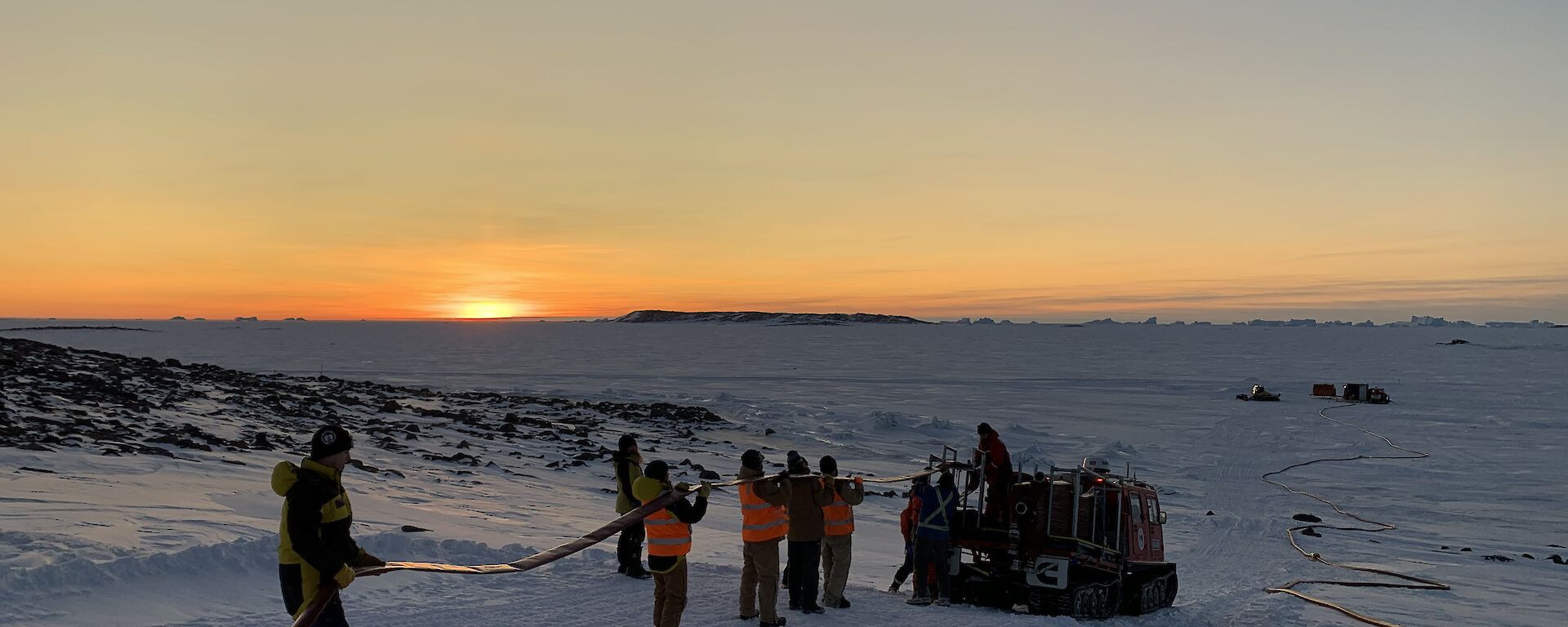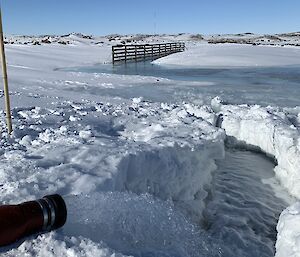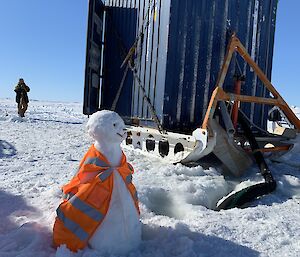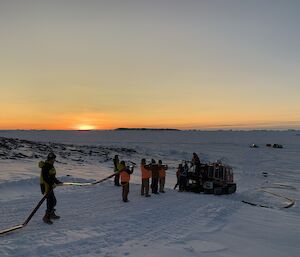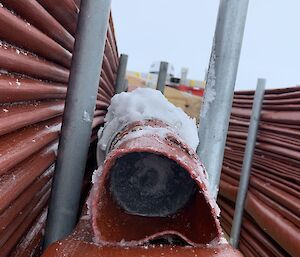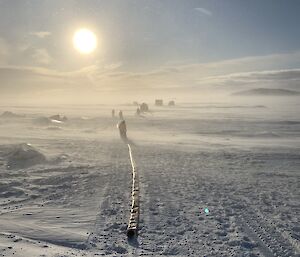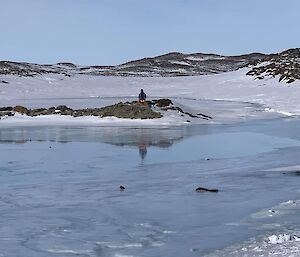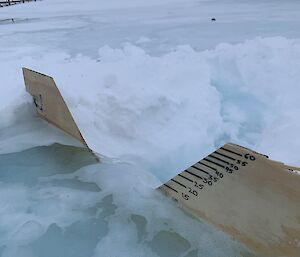Tarn (n) - A mountain lake or body of fresh water formed by a glacier.
In the context of Davis station, The Tarn has a much richer and and more nuanced meaning for those lucky enough to spend a winter here. To fully understand this story, we must take a walk down memory lane to 1957 when Phillip Law first decided upon the site for Davis in the Vestfold hills. Before settling on the exact spot, Law and his team sailed around for days searching for a site with access to fresh water and a good anchorage for ships, prioritising the access to open water - and the rest is history.
Ever since then, freshwater has been an issue for the station, which is ironic considering we can see the Antarctic Plateau just 30km away, home to 60% of the world's freshwater but not easily accessable due to terrain. So for the early days they got by with melting snow and recycling laundry water for showers, before a more sustainable reverse osmosis plant was installed to desalinate water from the station Tarn. The problem is, when you desalinate water it produces an ever increasing level of salinity in the by-product, which when processed back into the tarn builds up over time and becomes impossible to desalinate. So every 5 years or so, this water has to be pumped out and then refilled with fresh seawater.
But why not just desalinate seawater all year round??
Great question, and quite simply there is only a small window when the seawater near Davis is suitable to desalinate due to algal bloom and Antarctic krill levels. This window happens to fall at the tail end of the winter weather and coldest time of the year, making conditions cold and bleak for the brave men and women who have the task of pumping millions of litres of seawater 800m along a hose up a 60m vertical rise and into the Tarn. Oh, and of course, water freezes! So if it stops flowing, the hose turns into a giant Zooper Dooper of frozen seawater.
How's it going?
Well, we've been pumping for 11 days for a total 109 hours of pumping, with the end in sight as the levels have risen signifigantly and the consensus has become "we're getting close".
Do all stations have this issue?
No, most Antarctic stations have access to either frozen freshwater lakes, the Antarctic Plateau or seawater suitable for year round desalination. So for now, this is a uniquely Davis problem. But as technology has improved over the years there are indeed better ways to produce freshwater. Many other Antarctic stations use recycled water for non-potable uses and Davis is in the final phases of commissioning an Advanced Waste Water Treatment Plant capable of producing water clean enough to drink, and which may provide part of a solution to enhance water security at Davis in the future, although not neccessarily for drinking.
Conclusion
Stay tuned next week for Part 2 of The Tarn Diaries as we hopfully bring you the story of how we celebrated with a combined Tarn party and Oktoberfest.

